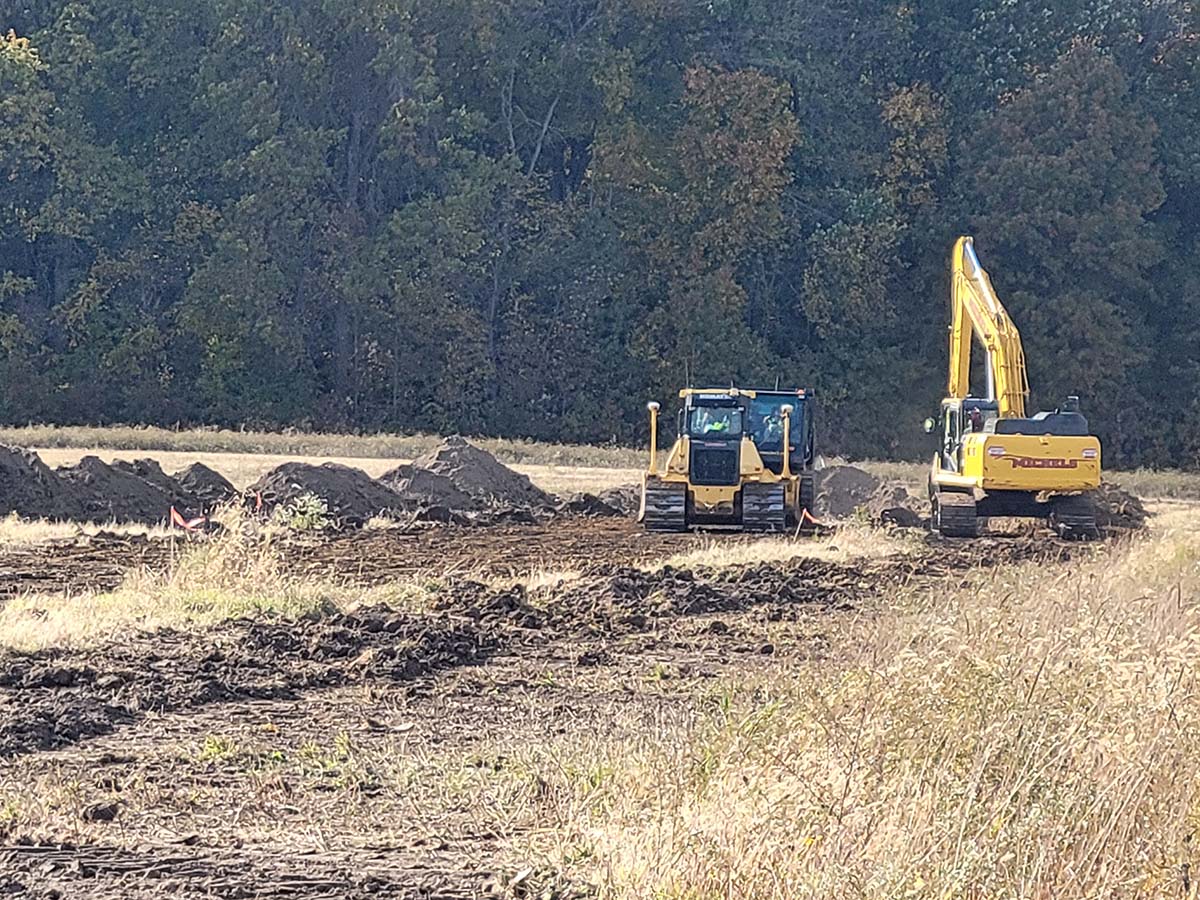Three Ohio Public-Land Restoration Projects Improve Lake Erie Water Quality
Healthy wetlands are critical to the success of H2Ohio, which addresses serious water issues that have been building in the state for decades
Healthy wetlands are critical to the success of H2Ohio, which addresses serious water issues that have been building in the state for decades

This spring, Ducks Unlimited (DU) and the Ohio Department of Natural Resources (ODNR) completed three H2Ohio public-land projects at Delaware Wildlife Area (WA), Little Portage WA and the Navarre Marsh Unit at Ottawa National Wildlife Refuge. The conservation work focused on wetland restoration, infrastructure updates to manage water levels more efficiently and filtering off-site agricultural drainage through wetlands.
The project at Delaware WA, which is open to public hunting and outdoor recreation, addresses threats to water quality in Delaware Lake and restored or enhanced 216 acres of emergent, forested and scrub-shrub wetlands.
DU used $750,000 of H2Ohio funding from ODNR, $79,000 from the Ohio Division of Wildlife (ODOW), and a $100,000 North American Wetlands Conservation Act (NAWCA) grant to design and build a 41-acre wetland in an agricultural field. The wetland adds to two existing but degraded wetlands to form a three-wetland treatment train in which water pumped from Delaware Lake passes through all three wetlands. Sediment and nutrients are filtered before water returns to the lake.
“The two degraded wetlands were enhanced by updating levees and water-control structures, and improving water distribution channels,” said Russ Terry, DU senior regional biologist. “The Ohio Division of Wildlife also planted 13 acres of former cropland to native grasses and wildflowers. These projects not only improve water quality in Delaware Lake, but they also expand outdoor recreational opportunities for the public.”
Big Changes at Little Portage
DU and ODOW used funding from H2Ohio, the Pittman-Robertson Federal Aid in Wildlife Restoration Act and the National Oceanic and Atmospheric Administration (NOAA) to design and implement a complete upgrade to the infrastructure used to manage 254 acres of coastal wetlands at Little Portage WA at the confluence of the Portage and Little Portage Rivers.
More than a mile of internal levees was removed. The remaining levees were updated, a new primary pump system and water-control structures were installed, and a water distribution channel was created to independently manage Little Portage’s four wetland units. More than 400 acres of off-site agricultural run-off was diverted to the wetlands. Previously, the water flowed directly into the Little Portage River.
“A major component of H2Ohio is to reduce the number of toxic algal blooms that plague Lake Erie,” said ODNR H2Ohio Wetlands Program Manager Eric Saas. “Nutrients from run-off are a known cause of these blooms, so it’s critical that we continue to restore wetlands at public-use sites, and across the state of Ohio, like Little Portage, so the water can be filtered before it enters Lake Erie.”
Coastal Wetlands Enhanced at Navarre
Three Great Lakes Restoration Initiative grants from the U.S. Fish and Wildlife Service (USFWS) and an H2Ohio grant from ODNR provided funding for engineering design services, enhancing coastal wetlands and upgrading the infrastructure used to manage more than 770 acres of wetlands at the Navarre Marsh Unit. The property, at the mouth of the Toussaint River, is owned by Energy Harbor but managed by USFWS through a long-term lease agreement.
“We designed and installed three new pump stations and a water-control structure to improve wetland management capability, connect the wetlands with Lake Erie or the Toussaint River, and provide seasonal fish passage from the river into a portion of the coastal wetlands,” Terry said. “Public land projects like this provide breeding and migration habitat for waterfowl while also helping to improve the quality of water flowing into Lake Erie.”